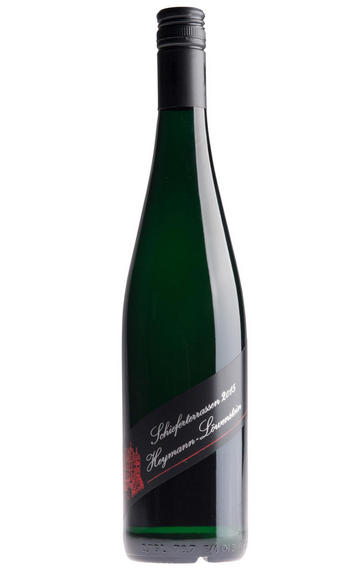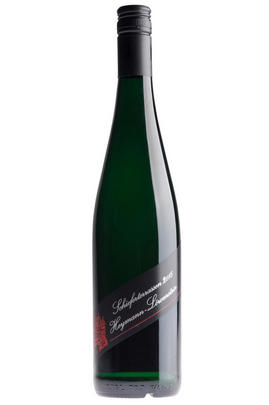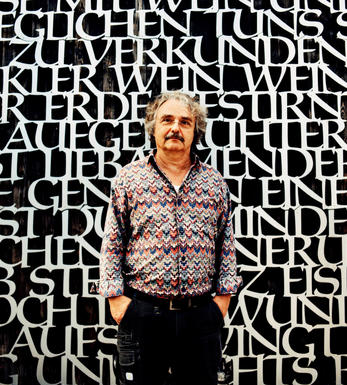
2015 Riesling, Schieferterrassen, Heymann-Löwenstein, Mosel, Germany

Critics reviews
Stephan Reinhardt - The Wine Advocate #229, 28th Feb 2017
About this WINE

Weingut Heymann-Lowenstein
Reinhard Löwenstein created his estate in 1980, spending the early years identifying top sites, before settling on five hectares of prime, precipitous Winningen (Lower Mosel) slate slopes. Since then, the estate has grown to 15 hectares, incorporating sites in the Von Blauem, Kirchberg, Stolzenberg, Röttgen and Uhlen vineyards.
This landscape is both wild and beautiful and is made up of a patchwork of soil types, many of which influence the characters of the wines. Their grower is an eccentric perfectionist and his passion lies in expressing the personality of each of his myriad slate soils. He believes that good “energy” in the vineyard and winery will result in good wine. In an effort to create this, the winery is filled with the soothing sounds of running water and windpipes.
On a more practical level, the fruit undergoes meticulous sorting in the vineyards; then the juice is given 24 to 48 hours skin contact, before fermenting to as close to full dryness as possible Crucially, Reinhard aims to incorporate between 10 and 20 percent botrytised fruit to his dry wines, imparting complexity and richness. The wines usually achieve around 12 percent alcohol, as they aren’t bottled until well into the summer, unlike more classical Mosel styles, which are bottled in March or April. The result is wine with great personality and energy, just like its grower.

Riesling
Riesling's twin peaks are its intense perfume and its piercing crisp acidity which it manages to retain even at high ripeness levels.
In Germany, Riesling constitutes around 20% of total plantings, yet it is responsible for all its greatest wines. It is planted widely on well-drained, south-facing slate-rich slopes, with the greatest wines coming from the best slopes in the best villages. It produces delicate, racy, nervy and stylish wines that cover a wide spectrum of flavours from steely and bone dry with beautifully scented fruits of apples,apricots, and sometimes peaches, through to the exotically sweet flavours of the great sweet wines.
It is also an important variety in Alsace where it produces slightly earthier, weightier and fuller wines than in Germany. The dry Rieslings can be austere and steely with hints of honey while the Vendages Tardives and Sélection de Grains Nobles are some of the greatest sweet wines in the world.
It is thanks to the New World that Riesling is enjoying a marked renaissance. In Australia the grape has developed a formidable reputation, delivering lime-sherbet fireworks amid the continental climate of Clare Valley an hour's drive north of Adelaide, while Barossa's Eden Valley is cooler still, producing restrained stony lime examples from the elevated granitic landscape; Tasmania is fast becoming their third Riesling mine, combining cool temperatures with high UV levels to deliver stunning prototypes.
New Zealand shares a similar climate, with Riesling and Pinot Gris neck to neck in their bid to be the next big thing after Sauvignon Blanc; perfectly suited is the South Island's Central Otago, with its granitic soils and continental climate, and the pebbly Brightwater area near Nelson. While Australia's Rieslings tend to be full-bodied & dry, the Kiwis are more inclined to be lighter bodied, more ethereal and sometimes off-dry; Alsace plays Mosel if you like.


Buying options
Add to wishlist
Description
The aromatics are scented, with layers of white peach, herbs and slate-inflected minerals. The palate is dry and bright with a slightest hint of residual sugar to balance the racy acidity. There is a richness to the fruit on the palate that is characteristic of the 2015 vintage. Long and refreshing, this wine will drink well now, but also reward ageing over the next 3-5 years.
Katherine Dart MW – Wine Buyer, June 2017
wine at a glance
Delivery and quality guarantee